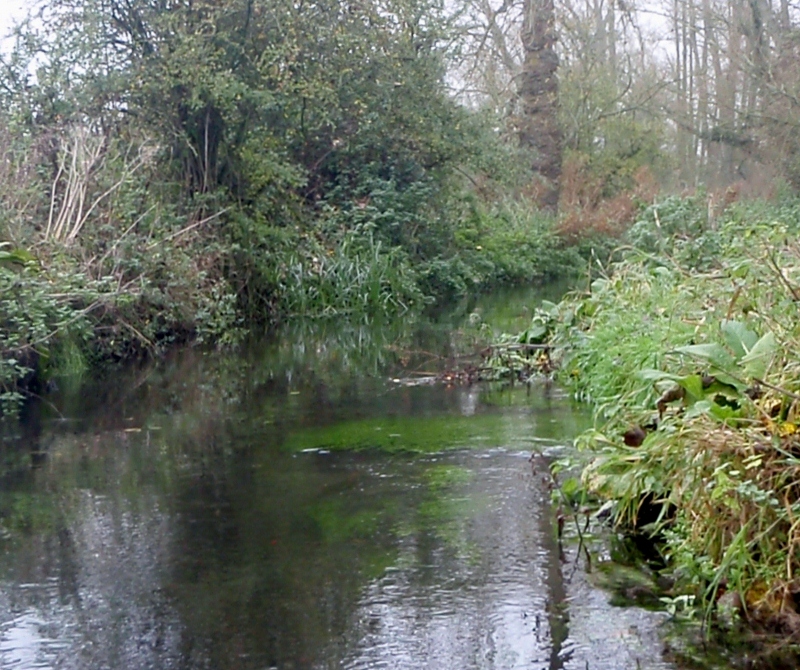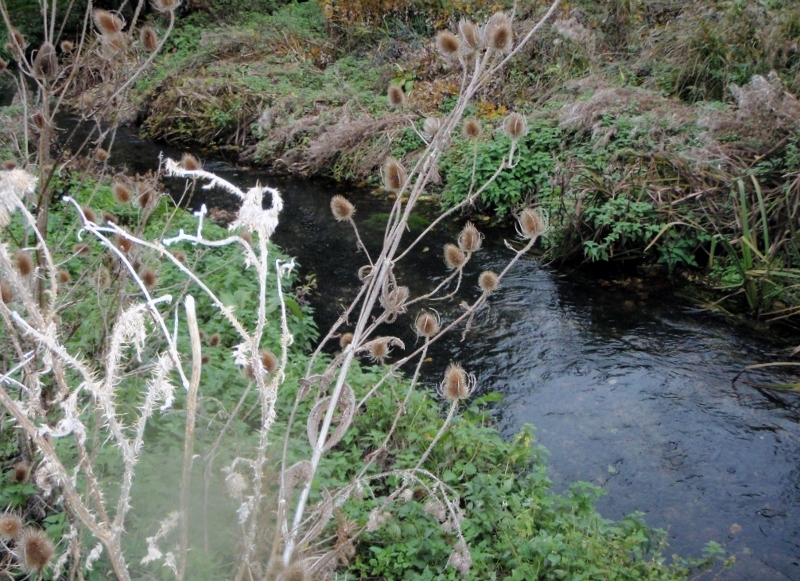Peter Anderson is a fan of fishing small streams, in fact a big fan. This month he is showing us one he likes to fish and how he gets the most from his time on the water.
Not your typical chalkstream, this one. It’s narrow, deep and, frankly, unkempt. But I love it! It has a lot going for it:-
1. It’s pretty wild. A trek along a bridle path away from the river, then cutting through woodland and undergrowth to find the river. No manicured banks here!
2. It’s peaceful. Nobody walks the dog, nobody throws sticks and stones in the water (go to Dovedale in the school holidays for that). It’s just you, the birds and the water.
3. It’s hard. This isn’t for novices. It averages 4 feet wide and 2 feet deep, but it widens to 6 feet and narrows to a mere 2 feet. And the depth drops to well over 5 feet. Unkempt banks and overhanging trees add to the joy... if you can’t roll cast, then go home. But it’s all worth it when you catch a fish.
4. There are some very big grayling and lots of trout. Unfortunately there are a few stock fish which find their way from adjoining stocked beats and I for one don’t like catching 2-3lb stockies in a stream 4 feet wide, but there we go.
The fishing is just absorbing. Chest waders and a wading staff are needed. Get in carefully, sit on the bank, dangle you legs in the water and test the bottom with the staff. It’s mainly gravel but there is the odd patch of silt maybe 2 feet deep. Dropping into 2 feet of water to then sink into 2 feet of silt is, well, a bit inconvenient to say the least. So get in safely and stay in as long as possible. There are a couple of places you need to get out, one a hole dropping to over 5 feet deep with a silt bottom, the other where a tree has fallen right across the river and is impassable.

Wade quietly and flick the fly 2-3 rod lengths upstream. I usually use a 7’6” 3 weight. Keep the leader short, I attach 5 feet of 3lb Stroft direct to the end on the fly line. Fish will take the dry, more will come to the nymph. I am a big duo fan but don’t use it here, too many opportunities to get caught up on a branch or shrub or (too often) nettles. The fewer hooks there are around, the less the likelihood having this problem, or a tangle come to that. My nymphs will be in sizes 16/18/20 and will have a tungsten bead. Keep it simple, hare’s ear or PTN is fine. I use the fly line as a bite indicator, if it jags away it might be the bottom... but it could be a fish. Strike first, ask questions later. And strike if the fly line does anything odd, if it stops, suddenly sinks etc. Don’t be depressed if you hook a leaf or some weed, you are spotting what could be takes and reacting properly. Some of my best fish have been what I first thought to be the bottom.
The fish will be in between the weed beds and , importantly, in the deeper water. The outside of bends will be deeper where the water has scoured away the bank and fish will lie here. Variations in depth are vital, a shallow riffle dropping into a deeper pool will hold fish.

For the bigger fish, the slower, deeper pools are where they will be. There are a couple of such pools on this stream. The first is just below the fallen tree. It’s tricky, the fish lie close to the branches in the water. The trick is to get the fly as close to the tree as possible without hooking it! If a branch is hooked then it’s game over, because you have to go and retrieve the fly. Flies dangling on nylon from a tree branch are a threat to wildlife and must be retrieved if at all possible. No fish is worth the death of a songbird.
The other deep pool is on the outside of a bend with a semi submerged bush, decent flow and a silt bottom, which all combine to make wading, erm, interesting. But what grayling it holds!
So this is my favourite chalkstream. It’s about half a mile of joy which takes 3 hours to fish. At the end I clamber out exhausted and blissfully happy and isn’t that what this fishing lark is all about?